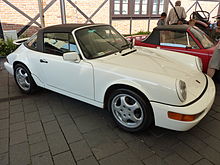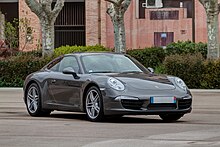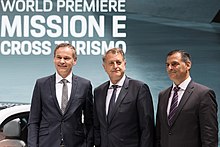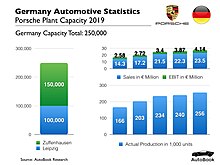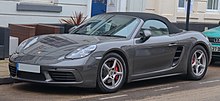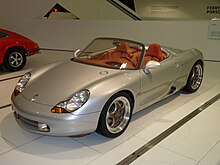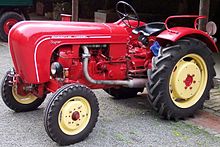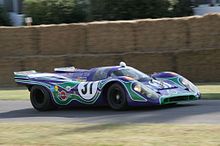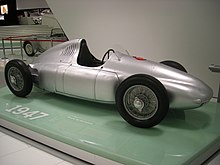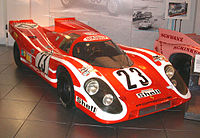© 2023 Порше Центр Москва
Обращаем Ваше внимание на то, что данный интернет-сайт носит
исключительно информационный характер и ни при каких условиях
не является публичной офертой, определяемой положениями
статьи 437 (2) Гражданского кодекса Российской Федерации.
Окончательную стоимость автомобилей модельного ряда Porsche уточняйте
у менеджеров отдела продаж.
Порше Центр Москва – один из крупнейших официальных дилеров Porsche в
России. Салон предоставляет полный набор услуг по продаже и сервисному
обслуживанию автомобилей Porsche. Одним из неоспоримых преимуществ Порше Центр
Москва является удобное местоположение – по дороге к международному аэропорту
Шереметьево. Высококвалифицированный персонал, проходящий на регулярной основе
техническое обучение, в сочетании с индивидуальным подходом и разумным
отношением к Вашим расходам, помогут Вам принять правильное решение в пользу
нашего сервисного центра.
Уточнить технические характеристики, цену и наличие автомобилей, записаться
на сервисное обслуживание Вы можете позвонив нам +7 (499) 112-19-11 или
заполнив заявку н на обратный звонок.
Мы всегда рады видеть Вас в числе своих друзей и клиентов.
This article is about the automotive brand and manufacturer, Porsche AG. For the holding company that is the majority owner of Volkswagen Group, see Porsche SE. For other uses of Porsche, see Porsche (disambiguation).
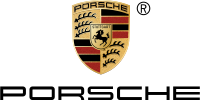 |
|

Headquarters in Stuttgart |
|
| Type | Public (AG) |
|---|---|
|
Traded as |
FWB: P911 DAX component |
| ISIN | DE000PAG9113 |
| Industry | Automotive |
| Founded | 1931; 92 years ago in Stuttgart, Germany |
| Founder | Ferdinand Porsche |
| Headquarters | Stuttgart, Germany |
|
Area served |
Worldwide |
|
Key people |
Wolfgang Porsche, Chairman Oliver Blume, CEO[1] |
| Products | Automobiles |
|
Production output |
|
| Services | Automotive financial services, engineering services, investment management |
| Revenue | |
|
Operating income |
|
|
Net income |
|
| Total assets | |
| Total equity | |
| Owners |
|
|
Number of employees |
39,162 (2022)[2] |
| Subsidiaries |
|
| Website | www |
Dr. Ing. h.c. F. Porsche AG, usually shortened to Porsche (German pronunciation: [ˈpɔʁʃə] ⓘ; see below), is a German automobile manufacturer specializing in high-performance sports cars, SUVs and sedans, headquartered in Stuttgart, Baden-Württemberg, Germany. The company is owned by Volkswagen AG, a controlling stake of which is owned by Porsche Automobil Holding SE.
Porsche’s current lineup includes the 718, 911, Panamera, Macan, Cayenne and Taycan.
History
Origin
Ferdinand Porsche (1875–1951) founded the company called «Dr. Ing. h. c. F. Porsche GmbH»[4] with Adolf Rosenberger[5] and Anton Piëch in 1931.[6] The main offices was at Kronenstraße 24 in the centre of Stuttgart.[7] Initially, the company offered motor vehicle development work and consulting,[4] but did not build any cars under its own name. One of the first assignments the new company received was from the German government to design a car for the people; that is, a Volkswagen.[4] This resulted in the Volkswagen Beetle, one of the most successful car designs of all time.[8] The Porsche 64 was developed in 1939 using many components from the Beetle.[4]
During World War II,[9] Volkswagen production turned to the military version of the Volkswagen Beetle, the Kübelwagen,[9] 52,000 produced, and Schwimmwagen,[9] 15,584 produced.[10] Porsche produced several designs for heavy tanks during the war, losing out to Henschel & Son in both contracts that ultimately led to the Tiger I and the Tiger II. However, not all this work was wasted, as the chassis Porsche designed for the Tiger I was used as the base for the Elefant tank destroyer. Porsche also developed the Maus super-heavy tank in the closing stages of the war, producing two prototypes.[11] Ferdinand Porsche’s biographer, Fabian Müller, wrote that Porsche had thousands of people forcibly brought to work at their factories during the war. The workers wore the letter «P» on their clothing at all times. It stood not for «Porsche», but for «Poland».[12]
At the end of World War II in 1945, the Volkswagen factory at KdF-Stadt fell to the British. Ferdinand lost his position as chairman of the board of management of Volkswagen, and Ivan Hirst, a British Army major, was put in charge of the factory. (In Wolfsburg, the Volkswagen company magazine dubbed him «The British Major who saved Volkswagen».)[13] On 15 December of that year, Ferdinand was arrested for war crimes, but not tried. During his 20-month imprisonment, Ferdinand Porsche’s son, Ferry Porsche, decided to build his own car, because he could not find an existing one that he wanted to buy. He also had to steer the company through some of its most difficult days until his father’s release in August 1947.[14]
The first models of what was to become the 356 were built in a small sawmill in Gmünd, Austria.[14] The prototype car was shown to German auto dealers, and when pre-orders reached a set threshold, production (with aluminum body) was begun by Porsche Konstruktionen GesmbH, founded by Ferry and Louise. Many regard the 356 as the first Porsche simply because it was the first model sold by the fledgling company. After production of the 356 was taken over by the father’s Dr. Ing. h.c. F. Porsche GmbH in Stuttgart in 1950, Porsche commissioned a Zuffenhausen-based company, Reutter Karosserie, which had previously collaborated with the firm on Volkswagen Beetle prototypes, to produce the 356’s steel body. In 1952, Porsche constructed an assembly plant (Werk 2) across the street from Reutter Karosserie; the main road in front of Werk 1, the oldest Porsche building, is now known as Porschestrasse.[15] The 356 was road-certified in 1948.
Company logo
Porsche’s company logo stems from the coat of arms of the Free People’s State of Württemberg of Weimar Germany of 1918–1933, which had Stuttgart as its capital. (The Bundesland of Württemberg-Hohenzollern used the same arms from 1945 to 1952, while Stuttgart during these years operated as the capital of adjacent Württemberg-Baden.) The arms of Stuttgart appear in the middle of the logo as an inescutcheon, for the company had its headquarters in Stuttgart. The heraldic symbols, combined with the texts «Porsche» and «Stuttgart», do not form a conventional coat of arms, since heraldic achievements never spell out the name of the armiger nor the armiger’s home town in the shield.
Württemberg-Baden and Württemberg-Hohenzollern both in 1952 became part of the present Bundesland of Baden-Württemberg after the political consolidation of West Germany in 1949, but the old design of the arms of Württemberg lives on in the Porsche logo. On 30 January 1951, not long before the formation of Baden-Württemberg, Ferdinand Porsche died from complications following a stroke.
Developments
In post-war Germany, parts were generally in short supply, so the 356 automobile used components from the Volkswagen Beetle, including the engine case from its internal combustion engine, transmission, and several parts used in the suspension. The 356, however, had several evolutionary stages, A, B, and C, while in production, and most Volkswagen-sourced parts were replaced by Porsche-made parts. Beginning in 1954 the 356s engines started utilizing engine cases designed specifically for the 356. The sleek bodywork was designed by Erwin Komenda, who also had designed the body of the Beetle. Porsche’s signature designs have, from the beginning, featured air-cooled rear-engine configurations (like the Beetle), rare for other car manufacturers, but producing automobiles that are very well balanced.
In 1964, after a fair amount of success in motor-racing with various models including the 550 Spyder, and with the 356 needing a major re-design, the company launched the Porsche 911: another air-cooled, rear-engined sports car, this time with a six-cylinder «boxer» engine. The team to lay out the body shell design was led by Ferry Porsche’s eldest son, Ferdinand Alexander Porsche (F. A.). The design phase for the 911 caused internal problems with Erwin Komenda, who led the body design department until then. F. A. Porsche complained Komenda made unauthorized changes to the design. Company leader Ferry Porsche took his son’s drawings to neighbouring chassis manufacturer Reuter. Reuter’s workshop was later acquired by Porsche (so-called Werk 2). Afterward, Reuter became a seat manufacturer, today known as Keiper-Recaro.
The design office gave sequential numbers to every project (See Porsche type numbers), but the designated 901 nomenclature contravened Peugeot’s trademarks on all ‘x0x’ names, so it was adjusted to 911. Racing models adhered to the «correct» numbering sequence: 904, 906, 908. The 911 has become Porsche’s most well-known model – successful on the race-track, in rallies, and in terms of road car sales. It remains in production; however, after several generations of revision, current-model 911s share only the basic mechanical configuration of a rear-engined, six-cylinder coupé, and basic styling cues with the original car. A cost-reduced model with the same body, but with a 356-derived four-cylinder engine, was sold as the 912.
In 1972, the company’s legal form was changed from Kommanditgesellschaft (KG), or limited partnership, to Aktiengesellschaft (AG), or public limited company, because Ferry Porsche came to believe the scale of the company outgrew a «family operation», after learning about Soichiro Honda’s «no family members in the company» policy at Honda. This led to the establishment of an executive board with members from outside the Porsche family, and a supervisory board consisting largely of family members. With this change, most family members in the operation of the company, including F. A. Porsche and Ferdinand Piëch, departed from the company.
F. A. Porsche founded his own design company, Porsche Design, which is renowned for exclusive sunglasses, watches, furniture, and many other luxury articles. Louise’s son and Ferry’s nephew Ferdinand Piëch, who was responsible for mechanical development of Porsche’s production and racing cars (including the very successful 911, 908 and 917 models), formed his own engineering bureau, and developed a five-cylinder-inline diesel engine for Mercedes-Benz. A short time later he moved to Audi (used to be a division, then a subsidiary, of Volkswagen), and pursued his career through the entire company, ultimately becoming the chairman of Volkswagen Group.
The first chief executive officer (CEO) of Porsche AG was Ernst Fuhrmann, who had been working in the company’s engine development division. Fuhrmann was responsible for the so-called Fuhrmann-engine, used in the 356 Carrera models as well as the 550 Spyder, having four overhead camshafts instead of a central camshaft with pushrods, as in the Volkswagen-derived serial engines. He planned to cease the 911 during the 1970s and replace it with the V8-front engined grand sportswagon 928. As we know today, the 911 outlived the 928 by far. Fuhrmann was replaced in the early 1980s by Peter W. Schutz, an American manager and self-proclaimed 911 aficionado. He was then replaced in 1988 by the former manager of German computer company Nixdorf Computer AG, Arno Bohn, who made some costly miscalculations that led to his dismissal soon after, along with that of the development director, Dr. Ulrich Bez, who was formerly responsible for BMW’s Z1 model, and was CEO of Aston Martin from 2000 to 2013.[16]
In 1990, Porsche drew up a memorandum of understanding with Toyota to learn and benefit from Japanese lean manufacturing methods. In 2004 it was reported that Toyota was assisting Porsche with hybrid technology.[17]
Following the dismissal of Bohn, Heinz Branitzki, a longtime Porsche employee, was appointed as interim CEO. Branitzki served in that position until Wendelin Wiedeking became CEO in 1993. Wiedeking took over the chairmanship of the board at a time when Porsche appeared vulnerable to a takeover by a larger company. During his long tenure, Wiedeking transformed Porsche into a very efficient and profitable company.
Ferdinand Porsche’s nephew, Ferdinand Piëch, was chairman and CEO of the Volkswagen Group from 1993 to 2002 and is chairman of the Volkswagen AG Supervisory Board since then. With 12.8 percent of the Porsche SE voting shares, he also remains the second-largest individual shareholder of Porsche SE after his cousin, F. A. Porsche, which had 13.6 percent.
Porsche’s 2002 introduction of the Cayenne also marked the unveiling of a new production facility in Leipzig, Saxony, which once accounted for nearly half of Porsche’s annual output. In 2004, production of the 456 kilowatts (620 PS; 612 bhp) Carrera GT commenced in Leipzig, and at EUR 450,000 ($440,000 in the United States) it was the most expensive production model Porsche ever built.
In mid-2006, after years of the Boxster (and later the Cayenne) as the best selling Porsche in North America, the 911 regained its position as Porsche’s best-seller in the region. The Cayenne and 911 have cycled as the top-selling model since. In Germany, the 911 outsells the Boxster/Cayman and Cayenne.[18]
In May 2011, Porsche Cars North America announced plans to spend $80–$100 million, but will receive about $15 million in economic incentives to move their North American headquarters from Sandy Springs, a suburb of Atlanta, to Aerotropolis, Atlanta, a new mixed-use development on the site of the old Ford Hapeville plant adjacent to Atlanta’s airport.[19] Designed by architectural firm HOK, the headquarters will include a new office building and test track.[20][21][22] The facility will be known by its new address, One Porsche Drive.
In October 2017, Porsche Cars North America announced the launch of Porsche Passport,[23] a new sports car and SUV subscription program. This new offering allows consumers to access Porsche vehicles through subscribing to the service, rather than owning or leasing a vehicle. The Porsche Passport service is available initially in Atlanta.[24][25]
During the COVID-19 pandemic, in March 2020, Porsche suspended its manufacturing in Europe for two weeks, «By taking this step, the sports car manufacturer is responding to the significant acceleration in the rate of infection caused by the coronavirus and the resultant measures implemented by the relevant authorities.»[26]
In August 2022, Bloomberg News reported that Porsche has lined up interest in subscription of its initial public offering for a valuation between US$60–85 billion. It is expected to be listed on Frankfurt Stock Exchange in September.[27]
Relationship with Volkswagen
The company has always had a close relationship with, initially, the Volkswagen (VW) marque, and later, the Volkswagen Group (which also owns Audi AG), because the first Volkswagen Beetle was designed by Ferdinand Porsche.
The two companies collaborated in 1969 to make the VW-Porsche 914 and 914-6, whereby the 914-6 had a Porsche engine, and the 914 had a Volkswagen engine. Further collaboration in 1976 resulted in the Porsche 912E (US only) and the Porsche 924, which used many Audi components, and was built at Audi’s Neckarsulm factory, which had been NSU’s. Porsche 944s were also built there,[28] although they used far fewer Volkswagen components. The Cayenne, introduced in 2002, shares its chassis with the Volkswagen Touareg and the Audi Q7, which is built at the Volkswagen Group factory in Bratislava, Slovakia.
Corporate restructuring
Porsche SE was created in June 2007 by renaming the old Dr. Ing. h.c. F. Porsche AG, and became a holding company for the families’ stake in Porsche Zwischenholding GmbH (50.1%) (which in turn held 100% of the old Porsche AG) and Volkswagen AG (50.7%).[29][30] At the same time, the new Dr. Ing. h.c. F. Porsche AG (Porsche AG) was created for the car manufacturing business.
In August 2009, Porsche SE and Volkswagen AG reached an agreement that the car manufacturing operations of the two companies would merge in 2011, to form an «Integrated Automotive Group».[31][32] The management of Volkswagen AG agreed to 50.76% of Volkswagen AG being owned by Porsche SE in return for Volkswagen AG management taking Porsche SE management positions (in order for Volkswagen management to remain in control), and for Volkswagen AG acquiring ownership of Porsche AG.
As of the end of 2015, the 52.2% control interest in VW AG is the predominant investment by Porsche SE, and Volkswagen AG in turn controls brands and companies such as Volkswagen, Audi, SEAT, Škoda, Bentley, Bugatti, Lamborghini, Porsche AG, Ducati, VW Commercial Vehicles, Scania, MAN, as well as Volkswagen Financial Services.[33]
Dr. Ing. h.c. F. Porsche AG (which stands for Doktor Ingenieur honoris causa Ferdinand Porsche Aktiengesellschaft), as a 100% subsidiary of VW AG, is responsible for the actual production and manufacture of the Porsche automobile line. The company currently produces Porsche 911,[34] Boxster and Cayman sports cars, the Cayenne and Macan sport utility vehicles and the four-door Panamera.
Porsche AG has a 29% share in German engineering and design consultancy Bertrandt AG[35][36] and 81.8% of Mieschke Hofmann und Partner.[37] In 2018, Porsche acquired a 10% minority shareholding stake of the Croatian electric sportscar manufacturer Rimac Automobili to form a development partnership.[38][39]
Initial public offering
In February 2022, Volkswagen AG had announced that it would examine the feasibility of a possible IPO of Porsche AG.[40] The share capital of Porsche AG has been divided into 50% non-voting preference shares and 50% ordinary shares.[40][3] Volkswagen AG will retain 75% of ordinary shares, while Porsche SE will acquire 25% of ordinary shares. Volkswagen AG will also retain 75% of preference shares, while 25% of preference shares (12.5% of share capital) will be sold during IPO,[40] while Qatar Investment Authority has already committed to buy 4.99% of preference shares, leaving another 20.01% (10% of share capital), to other investors.[3] As part of the preliminary offering, 113,875 thousand shares were sold at the upper limit of the price range — 82.5 euros. Thus, the value of the company was estimated at 75 billion euros. In the first hours of trading on the Frankfurt stock exchange on 29 September, the share price rose to 84 euros.[41]
Australian eFuel opperations
In April 2022, Porsche Australia announced they are planning to open an efuel manufacturing facility in the island state of Tasmania. The plant will be the first of its type in the country. The facility is to be named the HIF (Highly Innovative Fuels) Tasmania Carbon Neutral eFuel Plant. It is slated to open in 2026.[42]
Production and sales
The headquarters and main factory are located in Zuffenhausen, a district in Stuttgart, where Porsche produces flat-6 and V8 piston engines.[43] Cayenne and Panamera models are manufactured in Leipzig, Germany, and parts for the SUV are also assembled in the Volkswagen Touareg factory in Bratislava, Slovakia.[44] Boxster and Cayman production was outsourced to Valmet Automotive in Finland from 1997 to 2011, and in 2012 production moved to Germany.[45] Since 2011, the area of the Zuffenhausen plant has more than doubled, from 284,000 m2 (28.4 ha) to 614,000 m2 (61.4 ha), as a result of purchasing the former Layher, Deltona and Daimler sites, among others.[46][47]
In 2015, Porsche reported selling a total of 218,983 cars, 28,953 (13.22%) as domestic German sales, and 190,030 (86.78%) internationally.[48]
The company has been highly successful in recent times, and indeed claims to have the highest profit per unit sold of any car company in the world.[49] Table of profits (in millions of euros) and number of cars produced. Figures from 2008/9 onwards were not reported as part of Porsche SE.[50]
On 11 May 2017, Porsche built the one-millionth 911. An Irish green Carrera S was built for the celebration, and it will be taken on a global tour before becoming a permanent exhibit at the Porsche Museum in Stuttgart.[51]
In August 2021, Porsche has confirmed that it will be setting up a production plant in Malaysia, the first country outside of Europe.[52] Local assembly will be handled by Porsche Malaysia’s partner, Sime Darby, which has been the official distributor of the Stuttgart-based company in Malaysia since 2010.
| Year ending | Revenue | Pre-tax profit | Production | Sales |
|---|---|---|---|---|
| 31 July 2002 | €4,857m | €829m | 55,050 | 54,234 |
| 31 July 2003 | €5,583m | €933m | 73,284 | 66,803 |
| 31 July 2004 | €6,148m | €1,137m | 81,531 | 76,827 |
| 31 July 2005 | €6,574m | €1,238m | 90,954 | 88,379 |
| 31 July 2006 | €7,273m | €2,110m | 102,602 | 96,794 |
| 31 July 2007 | €7,368m | €5,857m | 101,844 | 97,515 |
| 31 July 2008 | €7,466m | €8,569m | 105,162 | 98,652 |
| 31 July 2009 | €?m | €-2,559m | 76,739 | 75,238 |
| 31 July 2010 | €7.79b | N/A | 89,123 | 81,850 |
| 31 December 2010 | €9.23b | €1.67b[53] | N/A | 97,273 |
| 31 December 2011[53] | €10.9b | €2.05b | 127,793 | 116,978 |
| 31 December 2012 | €13.9b | €2.44b | 151,999 | 143,096[54] |
| 31 December 2013 | €14.3b | €2.78b | 165,808 | 162,145[55] |
| 31 December 2014 | €17.2b | €3.06b | 203,097 | 187,208[56] |
| 31 December 2015 | €21.5b[57] | €3.382b | 234,497 | 225,121[58] |
| 31 December 2019[59] | €28.5b | €4.05b | 274,463 | 280,800 |
| 31 December 2020[59] | €28.7b | €4.38b | 263,236 | 272,162 |
| 31 December 2021[59] | €33.1b | €5.73b | 300,081 | 301,915 |
| 31 December 2022[2] | €37.6b | €6.77b | 321,321 | 309,884 |
Production composition
Of the 246,375 cars produced in the 2017 financial year, 32,197 were 911 models, 25,114 were Boxster and Cayman cars, 63,913 were Cayennes, 27,942 were Panameras and 97,202 were Macans.[60]
Of the 268,691 cars produced in 2018, 36,236 were 911 models, 23,658 were 718 Boxster and Cayman cars, 79,111 were Cayennes, 35,493 were Panameras, 93,953 were Macans and 240 Taycan pre-series vehicles.[61]
Of the 272,162 cars produced in 2020, 34,328 were 911 models, 21,784 were 718 Boxster and Cayman cars, 92,860 were Cayennes, 20,015 Taycan vehicles.[62]
Of the 321,321 vehicles produced in 2022, 41,947 were 911 models,18,080 were 718 Boxster/Cayman models, 91,117 were Macans, 98,113 were Cayennes, 35,241 were Panameras and 36,823 were Taycan models.[63]
U.S. sales
Porsche set a record for a U.S. sales month in November 2016, with over 5,500 sales, well on-pace to its best year ever.[64]
| Model | 2003[65] | 2004[66] | 2005[67] | |||
|---|---|---|---|---|---|---|
| Units | % of total | Units | % of total | Units | % of total | |
| 911 (996) | 9,935 ( |
33% | 10,227 ( |
31% | 10,653 ( |
31% |
| Boxster | 6,432 ( |
21% | 3,728 ( |
11% | 8,327 ( |
25% |
| Cayenne | 13,661 | 45% | 19,134 ( |
57% | 14,524 ( |
43% |
| Total | 30,028 ( |
33,289 ( |
33,859 ( |
| Model | 2006[68] | 2007[69] | 2008[70] | |||
|---|---|---|---|---|---|---|
| Units | % of total | Units | % of total | Units | % of total | |
| 911 (997) | 12,702 ( |
35% | 13,153 ( |
36% | 8,324 ( |
30% |
| Boxster | 4,850 ( |
14% | 3,904 ( |
11% | 2,982 ( |
11% |
| Cayman | 7,313 | 20% | 6,249 ( |
17% | 3,513 ( |
13% |
| Cayenne | 11,141 ( |
31% | 13,370 ( |
36% | 12,898 ( |
46% |
| Total | 36,095 ( |
36,680 ( |
27,717 ( |
| Model | 2009[71] | 2010[72] | 2011[73] | |||
|---|---|---|---|---|---|---|
| Units | % of total | Units | % of total | Units | % of total | |
| 911 (997) | 6,839 ( |
35.00% | 5,735 ( |
22.65% | 6,016 ( |
20.72% |
| Boxster/Cayman | 3,875 ( |
19.00% | 3,499 ( |
13.84% | 3,150 ( |
10.86% |
| Panamera | 1,247 | 6.33% | 7,741 ( |
30.57% | 6,879 ( |
23.70% |
| Cayenne | 7,735 ( |
39% | 8,343 ( |
33% | 12,978 ( |
45% |
| Total | 19,696 ( |
25,320 ( |
29,023 ( |
| Model | 2012[74] | 2013[75] | 2014[76] | |||
|---|---|---|---|---|---|---|
| Units | % of total | Units | % of total | Units | % of total | |
| 911 | 8,528 | 24.34% | 10,442 | 24.67% | 10,529 | 22.40% |
| Boxster/Cayman | 3,356 | 9.58% | 7,953 | 18.79% | 7,292 | 15.51% |
| Panamera | 7,614 | 21.73% | 5,421 | 12.81% | 5,740 | 12.21% |
| Cayenne | 15,545 | 44.36% | 18,507 | 43.73% | 16,205 | 34,47% |
| Macan | n.a. | n.a. | n.a. | n.a. | 7,241 | 15.40% |
| Total | 35,043 ( |
42,323 ( |
47,007 ( |
| Model | 2015[77] | 2016[78] | 2017[79] | |||
|---|---|---|---|---|---|---|
| Units | % of total | Units | % of total | Units | % of total | |
| 911 | 9,898 | 19.12% | 8,901 | 16.40% | 8,970 | 16.19% |
| 718 Boxster/Cayman | 6,663 | 12.87% | 6,260 | 11.53% | 5,087 | 9.18% |
| Panamera | 4,986 | 9.63% | 4,403 | 8.11% | 6,731 | 12.15% |
| Cayenne | 16,473 | 31.83% | 15,383 | 28.34% | 13,203 | 23.83% |
| Macan | 13,533 | 26.15% | 19,332 | 35.62% | 21,429 | 38.67% |
| Total | 51,756 ( |
54,280 ( |
55,420 ( |
| Model | 2018[80] | 2019[81] | 2020[82] | |||
|---|---|---|---|---|---|---|
| Units | % of total | Units | % of total | Units | % of total | |
| 911 | 9,647 | 17% | 9,265 | 15% | 8,840 ( |
15% |
| 718 | 5,276 | 9% | 3,880 | 6% | 3,447 ( |
6% |
| Taycan | n.a. | n.a. | 130 | 0.2% | 4,414 | 8% |
| Panamera | 8,042 | 14% | 6,625 | 11% | 3,870 ( |
7% |
| Cayenne | 10,733 | 19% | 19,001 | 31% | 18,092 ( |
32% |
| Macan | 23,504 | 41% | 22,667 | 37% | 18,631 ( |
33% |
| Total | 57,202 ( |
61,568 ( |
57,294 ( |
| Model | 2021[83] | 2022 | 1st half 2023[84] | |||
|---|---|---|---|---|---|---|
| Units | % of total | Units | % of total | Units | % of total | |
| 911 | 10,042 ( |
14% | 10,204 ( |
15% | 5,650 ( |
16% |
| 718 | 4,292 ( |
6% | 3,484 ( |
5% | 2,276 ( |
6% |
| Taycan | 9,419 ( |
13% | 7,271 ( |
10% | 3,162 ( |
9% |
| Panamera | 4,257 ( |
6% | 4,224 ( |
6% | 2,030 ( |
6% |
| Cayenne | 17,299 ( |
25% | 21,194 ( |
30% | 8,911 ( |
25% |
| Macan | 24,716 ( |
35% | 23,688 ( |
34% | 14,306 ( |
39% |
| Total | 70,005 ( |
70,065 ( |
36,335 |
Models
The current Porsche model range includes sports cars from the Boxster roadster to their most famous product, the 911. The Cayman is a coupé otherwise similar to the Boxster. The Cayenne is Porsche’s mid-size luxury sport utility vehicle (SUV). A high performance luxury saloon/sedan, the Panamera, was launched in 2009.
- Note: models in bold are current models
Consumer models
- 356
- 911 4-seat coupe, targa and cabriolet
- 911 (classic)
- 930
- 964
- 993
- 996
- 997
- 991
- 992
- 911 GT1 Straßenversion
- 912
- 914
- 918 Spyder
- 924
- 928 4-seat grand tourer
- 944
- 959
- 968
- Boxster 2-seat roadster
- 986
- 987
- 981
- 982
- Carrera GT
- Cayman 2-seat coupe
- 987
- 981
- 982
- Cayenne Mid-size crossover SUV
- Macan Compact crossover SUV
- Panamera 4- or «4+1»-seat liftback and shooting-brake estate
- Taycan 4- or «4+1»-seat sedan and shooting-brake estate EV
-
Porsche Cayman
-
Porsche Boxster
-
Porsche Panamera
-
Porsche Cayenne
-
Porsche Macan
-
Porsche 911
-
Porsche Taycan
Racing models
- 64
- 360 Cisitalia
- 550 Spyder
- 718
- 787
- 804
- 904
- 906
- 907
- 908
- 909 Bergspyder
- 910
- 911 GT1
- 917
- 919 hybrid
- 934
- 934/5
- 935
- 936
- 956
- 961
- 962
- 963
- Porsche 99X Electric
- Porsche-March 89P
- WSC-95 / LMP1-98
- LMP2000 (never raced)
- RS Spyder (9R6)
Prototypes and concept cars
- Porsche 114
- Porsche 356/1
- Porsche 695 (911 prototype)
- Porsche 901 (911 prototype)
- Porsche 916 (flat-6 914)
- Porsche 942
- Porsche 959 prototype
- 918 RSR
- Porsche 965[85]
- Porsche 969
- Porsche 989
- Porsche Boxster concept
- Porsche C88
- Porsche Panamericana
- Porsche Boxster E
- Porsche Panamera Sport Turismo concept
- Porsche Mission E
Tractors
- Porsche Type 110
- Porsche AP Series
- Porsche Junior (14 hp)
- Porsche Standard (25 hp)
- Porsche Super (38 hp)
- Porsche Master (50 hp)
- Porsche 312
- Porsche 108F
- Porsche R22
Hybrid and electric vehicles
For details on a Porsche 911-based all-electric car, see ERuf Model A.
In 2010, Porsche launched the Cayenne S Hybrid and announced the Panamera S Hybrid, and launched the Porsche 918 sports car in 2014, which also features a hybrid system. Also a plug-in hybrid model called the Panamera S E-Hybrid was released in October 2013 in the United States[86][87] and during the fourth quarter of 2013 in several European countries.
Porsche developed a prototype electric Porsche Boxster called the Boxster E in 2011[88] and a hybrid version of the 911 called the GT3 R Hybrid, developed with Williams Grand Prix Engineering in 2010.[89]
In July 2014, Porsche announced the launch by the end of 2014 of the Porsche Cayenne S E-Hybrid a plug-in hybrid, which will displace the Cayenne S Hybrid from the lineup. The S E-Hybrid will be the first plug-in hybrid in the premium SUV segment and will allow Porsche to become the first automaker with three production plug-in hybrid models.[90]
In July 2017, Porsche installed its first 350 kW, 800V charging station, which the upcoming Porsche Mission E will use. As of 2017, the Porsche charging station is the fastest electric vehicle charging station in the world, being able to charge a Porsche Mission E up to 80% within 15 minutes. Porsche is also currently working with other manufacturers to make Porsche charging stations compatible with other electric vehicles.[91]
In August 2018, Porsche announced that the formerly named Mission E electric car will be named «Taycan» meaning ‘leaping horse’.[92] The prototype electric car is expected to be revealed in 2019 after its completion.[93]
Aircraft engines
See Porsche PFM 3200.
Motorsport
Porsche has a record 19 outright wins at the 24 Hours of Le Mans.[94] Porsche is currently the world’s largest race car manufacturer. In 2006, Porsche built 195 race cars for various international motor sports events. In 2007, Porsche was expected to construct no fewer than 275 dedicated race cars (7 RS Spyder LMP2 prototypes, 37 GT2 spec 911 GT3-RSRs, and 231 911 GT3 Cup vehicles).[95]
Pronunciation
In keeping with the family name of founder Ferdinand Porsche, the company’s name is pronounced [ˈpɔʁʃə] in German, which corresponds to POR-shə in English,[96] homophonous with the feminine name Portia. However, in English it is often pronounced as a single syllable PORSH—without a final /ə/. In German orthography, word-final ⟨e⟩ is not silent but is instead an unstressed schwa.
Reputation
In a survey conducted by the Luxury Institute in New York, Porsche was awarded the title of «the most prestigious automobile brand». Five hundred households with a gross annual income of at least $200,000 and a net worth of at least $720,000 participated.[97]
Porsche won the J.D. Power and Associates Initial Quality Study (IQS) in 2006, 2009, 2010, and 2014.[98]
SUV reception
Porsche’s 2003 SUV, the Cayenne, received generally favorable commentary.[99][100]
In 2015, US News ranked the Macan as the best luxury compact SUV in its class.[101]
Reliability
A Canadian study in 2011 revealed that 97.4 percent of Porsches from the last 25 years are still on the road.[102]
In 2014, the Cayman and Boxster made the Consumer Reports list for most reliable vehicles on the road.[103]
Porsche’s 911 has been officially named by the TÜV (Technischer Überwachungsverein; Technical Inspection Association) as Germany’s most reliable car.[104]
See also
- CTS Fahrzeug-Dachsysteme
- List of automobile manufacturers of Germany
- List of Porsche engines
- Akira Nakai
- Porsche Club of America
- Porsche VIN numbers
References
Notes
- ^ «The Board of Management of Porsche AG — All BOM members — Porsche USA». Porsche HOME — Porsche USA.
- ^ a b c d e f g h «Annual and Sustainability Report 2022 Porsche AG.pdf» (PDF). Porsche Newsroom. 15 March 2023.
- ^ a b c «Factbox: The structure of the planned Porsche IPO». Reuters. 17 September 2022. Retrieved 19 September 2022.
- ^ a b c d J. P. Vettraino (23 December 2008). «Porsche at 60: The little sports-car company that could». Autoweek. Archived from the original on 6 February 2009. Retrieved 30 January 2009.
- ^ Automobile Quarterly, Volume 18, Issue 4, Automobile Quarterly, 1980
- ^ Klawitter, Nils (1 October 2009). «The Dark Pre-History of the World’s Favorite Sports Car». Der Spiegel.
- ^ «Historie — Porsche Engineering». Porsche Engineering. Retrieved 23 February 2016.
- ^ «Béla Barényi (1907–1997)». Automotive Hall of Fame. Archived from the original on 1 November 2009. Retrieved 25 March 2009.
- ^ a b c Burt, William (2002). Volkswagen Beetle. MotorBooks/MBI Publishing Company. p. 14. ISBN 978-0-7603-1078-6.
- ^ See Volkswagen Schwimmwagen#Development.
- ^ «Panzerkampfwagen VIII Maus Porsche Typ 205 / Tiger II(P)». Achtung Panzer. Archived from the original on 16 March 2018. Retrieved 4 May 2011.
- ^ Klawitter, Nils (1 October 2009). «Porsche’s Past: The Dark Pre-History of the World’s Favorite Sports Car». www.spiegel.de.
{{cite web}}: CS1 maint: url-status (link) - ^ Mantle, Jonathan (1996). Car wars: fifty years of greed, treachery, and skulduggery in the global marketplace. Arcade Publishing. p. 216. ISBN 978-1-55970-333-8.
- ^ a b Meredith, Laurence; Mark Hughes (1995). Original Porsche 356. MotorBooks/MBI Publishing Company. p. 7. ISBN 978-1-870979-58-0.
- ^ John Lamm (1998). Porsche Boxster. MotorBooks International. p. 100. ISBN 978-0-7603-0519-5.
- ^ «Aston Martin CEO Ulrich Bez To Step Down: Report». Motor Authority. Archived from the original on 10 April 2017. Retrieved 9 April 2017.
- ^ Nexteer Automotive Poland president Rafal Wyszomirski. «Just auto 23 November 2004». Just-auto.com. Archived from the original on 27 September 2011. Retrieved 1 August 2011.
- ^ «Porsche USA press release» (Press release). 11 September 2006.
- ^ Urvaksh Karkaria (12 May 2011). ««Porsche HQ relo draws $15M in incentives», Atlanta Business Chronicle, 2011-05-12″. Bizjournals.com. Retrieved 1 August 2011.
- ^ Tobin, Rachel (11 May 2011). «Porsche North America HQ to leave Sandy Springs for ex-Ford plant». ajc.com. Retrieved 1 August 2011.
- ^ ««Mayor Kasim Reed and Governor Nathan Deal Announce Porsche to Build New U.S. Headquarters in Metropolitan Atlanta», City of Atlanta Online». Atlantaga.gov. Archived from the original on 11 June 2011. Retrieved 1 August 2011.
- ^ Patton, Phil (18 November 2011). «Porsche to Build in Atlanta and California». The New York Times. Retrieved 30 November 2011.
- ^ «Porsche Passport». 14 February 2018. Archived from the original on 14 February 2018. Retrieved 31 December 2021.
- ^ «Porsche Launches New Sports Car and SUV Subscription Program». press.porsche.com. Archived from the original on 8 February 2018. Retrieved 7 February 2018.
- ^ «Porsche’s Passport to the New Mobility». Bloomberg.com. 20 October 2017. Retrieved 7 February 2018.
- ^ «Porsche is suspending production in Europe amid worsening coronavirus outbreak». Business Insider. Retrieved 18 March 2020.
- ^ Henning, Eyk; Foerster, Jan-Henrik (26 August 2022). «Porsche Attracts IPO Demand at Up to $85 Billion Valuation». Bloomberg News. Archived from the original on 27 August 2022.
- ^ «The history of the Neckarsulm plant». Audi MediaServices. Audi AG. Archived from the original on 8 October 2011. Retrieved 4 May 2011.
- ^ Rauwald, Christoph (18 June 2010). «Wall Street Journal 18 June 2010». Online.wsj.com. Retrieved 1 August 2011.
- ^ «Porsche SE Investor Relations». Porsche-se.com. Archived from the original on 1 September 2016. Retrieved 1 August 2011.
- ^ «Porsche Supervisory Board agrees on the contracts of implementation» (Press release). Porsche Automobil Holding SE, Stuttgart. 20 November 2009. Retrieved 22 November 2009.[dead link]
- ^ «Volkswagen Supervisory Board approves Comprehensive Agreement for an Integrated Automotive Group with Porsche» (Press release). Volkswagen Aktiengesellschaft. 13 August 2009. Archived from the original on 20 July 2011. Retrieved 22 November 2009.
- ^ «Porsche SE Annual Report 2015». p. 3. Archived from the original on 18 October 2016. Retrieved 17 October 2016.
- ^ PTI. «Porsche brings Limited Edition 911 R priced at around Rs 3 crore». The Hindu. Retrieved 9 March 2017.
- ^ «Porsche bolsters engineering and design operations». Autocar. 3 July 2014. Retrieved 16 September 2014.
- ^ «Porsche AG raises its stake in Bertrandt AG». Porsche AG. 3 July 2014. Retrieved 16 September 2014.
- ^ «Mieschke Hofmann und Partner (MHP) – the process supplier». MHP. Retrieved 16 September 2014.
- ^ «Porsche takes a stake in the Croatian technology and sports car company Rimac» (Press release). Porsche. 20 June 2018. Archived from the original on 20 June 2018. Retrieved 22 June 2018.
- ^ Savov, Vlad (20 June 2018). «Porsche accelerates EV supercar ambitions with investment in Rimac». The Verge. US. Archived from the original on 21 June 2018. Retrieved 22 June 2018.
- ^ a b c «Board of Management and Supervisory Board aim for an IPO of Dr. Ing. h.c. F. Porsche AG and decide on the next step with the «intention to float»«. www.volkswagenag.com. Retrieved 19 September 2022.
- ^ «Porsche races higher after landmark $72 bln listing». reuters.com. 29 September 2022.
- ^ Porsche to build Australian efuels plant in Tasmania, operational from mid-2026, Motor, 8 July 2022
- ^ «The history of engine construction». Porsche Newsroom.
- ^ «Union says VW’s Slovak plant eyes output cut». Reuters. 9 October 2008. Retrieved 17 January 2009.
- ^ «Porsche’s Finnish success story: 227,890 Boxsters and Caymans». valmet-automotive.com. 2011. Archived from the original on 4 October 2011. Retrieved 2 May 2011.
- ^ «Zuffenhausen is growing». Porsche Newsroom. Retrieved 11 June 2020.
- ^ «A New Era». Porsche Newsroom. Retrieved 11 June 2020.
- ^ «Porsche AG Annual Report 2015» (PDF). pp. 44 (German sales), 126 (total sales). Archived from the original (PDF) on 24 September 2016. Retrieved 8 November 2016.
- ^ Elliott, Hannah. «Forbes Autos review of Cayman S». Forbesautos.com. Archived from the original on 10 December 2008. Retrieved 3 October 2010.
- ^ «Porsche Annual Report Short Fiscal Year 2010» (PDF). Archived from the original (PDF) on 27 September 2011. Retrieved 1 August 2011.
- ^ «One Million Dreams: This Is the 1,000,000th Porsche 911». Archived from the original on 1 August 2017. Retrieved 3 July 2017.
- ^ «Porsche confirms CKD operations in Malaysia from 2022 at Sime Darby plant – first outside of Europe!». paultan.org. 30 August 2021. Retrieved 9 February 2022.
- ^ a b «Porsche AG turns in record performance in 2011» (Press release). Dr. Ing. h.c. F. Porsche AG. 13 March 2013. Retrieved 1 August 2013.
- ^ «Best year in the history of Porsche» (Press release). Dr. Ing. h.c. F. Porsche AG. 15 March 2013. Retrieved 1 August 2013.
- ^ «Porsche AG Annual Report 2013» (PDF). Retrieved 31 July 2014.[permanent dead link]
- ^ «Porsche AG Annual Report 2014». Retrieved 17 October 2016.
- ^ Porsche Newsroom. «Porsche at a glance». Archived from the original on 10 May 2017. Retrieved 17 October 2016.
- ^ «Porsche AG Annual Report 2015». Archived from the original on 19 October 2016. Retrieved 17 October 2016.
- ^ a b c «Brief overview». Porsche Newsroom. Retrieved 19 September 2022.
- ^ «Porsche 2017 Year in Review». Archived from the original on 30 July 2018. Retrieved 11 December 2018.
- ^ «Porsche AG Annual & Sustainability Report 2018». Archived from the original on 12 August 2019. Retrieved 19 January 2020.
- ^ «2020 (Full Year) Global: Porsche Sales Worldwide». best-selling-cars.com. 12 January 2021. Retrieved 23 August 2021.
{{cite web}}: CS1 maint: url-status (link) - ^ «Annual and Sustainability Report 2022 Porsche AG» (PDF). Porsche AG. Retrieved 15 March 2023.
- ^ «Porsche 2016 Year in Review – New Video, Record sales Self-driving Porsche –». Thecherrycreeknews.com. 29 December 2016. Retrieved 5 June 2017.
- ^ «January – March – Porsche Vehicle Sales in North America Exceed 30,000 in 2003» (Press release). Porsche AG. 8 January 2004. Retrieved 10 February 2009.
- ^ «January – March – Porsche sets North American sales record in 2004» (Press release). Porsche AG. 5 January 2005. Retrieved 10 February 2009.
- ^ «January – March – New record year for Porsche in North America» (Press release). Porsche AG. 4 January 2006. Retrieved 17 January 2009.
- ^ «Porsche succeeds 2006 with a new record in North America» (Press release). Porsche AG. 3 January 2007. Retrieved 17 January 2009.
- ^ «January – March – Porsche tops its record-breaking sales figures for North America in 2007» (Press release). Porsche AG. 3 January 2008. Retrieved 17 January 2009.
- ^ «January – March – Porsche Reports Decrease in North American Customer Deliveries in the 2008 Calendar Year» (Press release). Porsche AG. 5 January 2009. Retrieved 20 August 2009.
- ^ «Porsche Reports December Sales». Theautochannel.com. Retrieved 12 June 2011.
- ^ «Porsche Press Release». Press.porsche.com. 4 January 2011. Archived from the original on 22 May 2012. Retrieved 12 June 2011.
- ^ «Porsche Press Release». Press.porsche.com. 2 January 2012. Archived from the original on 14 May 2013. Retrieved 6 September 2012.
- ^ «Porsche Reports Best-Ever Sales in 2012; 21 Percent Increase Over 2011». Press.porsche.com. 14 January 2013. Archived from the original on 6 February 2014. Retrieved 27 February 2014.
- ^ «Porsche Reports Record Sales in 2013; 21 percent increase over 2012». Press.porsche.com. Archived from the original on 17 January 2014. Retrieved 27 February 2014.
- ^ «U.S. Porsche Dealers Sell 47,007 Vehicles in 2014». Press.porsche.com. Archived from the original on 31 October 2016. Retrieved 31 October 2016.
- ^ «Porsche Sets Record Year in 2015 with 51,756 Vehicles Delivered in the United States». Press.porsche.com. 5 January 2016. Archived from the original on 4 November 2016. Retrieved 31 October 2016.
- ^ «Porsche Sets Record in 2016 with 54,280 Vehicles Delivered in the U.S». Press.porsche.com. 4 January 2017. Archived from the original on 18 May 2017. Retrieved 5 June 2017.
- ^ «Porsche Sets U.S. Sales Record in 2017 with 55,420 Vehicles Delivered, Up 2.1 Percent». presse.porsche.de. Porsche. Retrieved 16 May 2020.
- ^ «Porsche Sets U.S. Retail Sales Record in 2018». presse.porsche.de. Porsche. Retrieved 16 May 2020.
- ^ «Porsche Posts Record U.S. Retail Sales in 2019». presse.porsche.de. Porsche. Retrieved 16 May 2020.
- ^ «Porsche Reports U.S. Retail Sales for 2020» (Press release). Porsche Cars North America. 5 January 2021. Retrieved 23 August 2021.
{{cite press release}}: CS1 maint: url-status (link) - ^ «Porsche reports U.S. retail sales for Q4 and full-year 2021» (Press release). Porsche. 1 April 2022. Retrieved 9 February 2022.
- ^ «Porsche reports U.S. retail sales for second quarter of 2023» (Press release). Porsche Cars North America. 12 July 2023. Retrieved 12 July 2023.
{{cite press release}}: CS1 maint: url-status (link) - ^ «Porsche 969/965 Story, Prototypes and Styling Exercises». Oppositelock. Archived from the original on 14 October 2020. Retrieved 13 October 2020.
- ^ Philippe Crowe (5 September 2013). «Porsche Panamera S E-Hybrid Now Available in the US». HybridCars.com. Retrieved 5 September 2013.
- ^ Tom Murphy (7 October 2013). «Sales Boost Expected for Refreshed Panamera». Wards Auto. Archived from the original on 29 October 2013. Retrieved 25 October 2013.
- ^ «Porsche Publicly Debuts its Electric Boxster E, But It’s Not For Sale». Car and Driver. 24 May 2011. Archived from the original on 9 August 2014. Retrieved 16 September 2014.
- ^ «PORSCHE 911 GT3R HYBRID». Williams Grand Prix Engineering Limited. Archived from the original on 22 September 2014. Retrieved 16 September 2014.
- ^ Porsche Press Release (24 July 2014). «Porsche introducing new plug-in Cayenne S E-Hybrid SUV; third plug-in from Porsche». Green Car Congress. Retrieved 27 July 2014.
- ^ Lambert, Fred (14 July 2017). «Porsche installs first ultra-fast 350 kW EV charging station». Electrek. Retrieved 16 July 2017.
- ^ «Porsche Taycan 2019: price, interior specs and release». The Week UK. Retrieved 1 October 2018.
- ^ «Porsche reveals and explains the Taycan all-electric powertrain in detail». Electrek. 30 July 2018. Retrieved 1 October 2018.
- ^ Staff (18 June 2017). «Porsche survives to take overall win at 2017 24 Hours of Le Mans». AutoWeek. Crain Communications. Retrieved 19 June 2017.
- ^ Gary Watkins (7 March 2007). «Warehouse Shopping – Inside Porsche’s Motorsport Center». AutoWeek. Archived from the original on 8 November 2011. Retrieved 17 January 2009.
- ^ «Porsche and Neanderthal: pronouncing German words in English». German.about.com. 15 September 2008. Archived from the original on 12 January 2011. Retrieved 29 April 2009.
- ^ «Porsche enjoys unsurpassed prestige in US». Porsche AG press release. Archived from the original on 18 April 2008. Retrieved 6 April 2008.
- ^ «Magna Steyr Assembly Plant in Graz, Austria, Receives Top Vehicle Quality Award in Europe» (PDF). J. D. Power and Associates. 7 June 2006. Archived from the original (PDF) on 30 May 2008. Retrieved 31 July 2008.
- ^ DeBord, Matthew (19 March 2009). «Peering into Porsche’s Future». CNBC. Retrieved 20 March 2009.
- ^ Frankel, Andrew (17 November 2002). «Porsche Cayenne». The Sunday Times. London. Retrieved 20 March 2009.
- ^ «Porsche Macan Review».
- ^ «Porsche 911 Named Most Reliable Sports Car By J.D. Power». autoguide.com.
- ^ Elliott, Hannah. «The 2014 Porsche Cayman is Better Than You Think. Here’s Why». Forbes.
- ^ «It’s Official: Toyota Prius and Porsche 911 Are Germany’s Most Reliable Cars». 8 December 2011.
Bibliography
- Frankenberg, Richard von (1973) [1961]. Porsche: the Man and his Cars (revised ed.). Henley-on-Thames, Oxfordshire, UK: G.T. Foulis & Co. ISBN 0854290907.
- Leffingwell, Randy; Ingram, Cameron; Furman, Michael (2014). Porsche Unexpected: Discoveries in Collecting. Philadelphia, PA, USA: Coachbuilt Press. ISBN 9780988273337.
- Ludvigsen, Karl (2019). Porsche: Excellence Was Expected – Book 1: Surpassing Expectations (1948-1971) (All new ed.). Cambridge, MA, USA: Bentley Publishers. ISBN 9780837617701.
- ——————— (2019). Porsche: Excellence Was Expected – Book 2: Hitting the Apex (1967-1989) (All new ed.). Cambridge, MA, USA: Bentley Publishers. ISBN 9780837617718.
- ——————— (2019). Porsche: Excellence Was Expected – Book 3: Comeback (1982-2008) (All new ed.). Cambridge, MA, USA: Bentley Publishers. ISBN 9780837617725.
- ——————— (2019). Porsche: Excellence Was Expected – Book 4: 21st Century (2002-2020) (All new ed.). Cambridge, MA, USA: Bentley Publishers. ISBN 9780837617732.
- Seiff, Ingo (1989). Porsche: Portrait of a Legend. London: Macdonald Orbis. ISBN 0356150623.
- Smith, Luke (2022). The Story of Porsche: A Tribute to the Legendary Manufacturer. London: Welbeck Publishing Group. ISBN 9781802792911.
- Wood, Jonathan, ed. (1985). Great Marques of Germany. London: Octopus Books. ISBN 0706422562.
External links
Wikimedia Commons has media related to Porsche.
- Official website
- Porsche Automobil Holding SE – the top-tier parent company
- Porsche Newsroom – Service by the Porsche Communication for journalists and the online community.
- Porsche Engineering
- Porsche Consulting
- Porsche Leipzig
- Cisitalia Museum
- Porsche YouTube channel
Генеральным директором «Порше Руссланд» назначен Дмитрий Курдюков, сменивший на этом посту Томаса Штерцеля.
Как пишет издание «АвтоБизнесРевю», Дмитрий Курдюков имеет два высших образования – юридическое и экономическое. Также окончил различные курсы повышения квалификации, в том числе в Кембриджском университете, Гаагской академии международного права и Международном тренировочном центре МОТ ООН. В 2002-2005 годах работал юристом в компании Noerr, а в 2004-2005 годах – старшим юристом в CMS. В 2005 году перешел в «Порше Руссланд», где вплоть до нового назначения занимал должность директора по правовому обеспечению и внешним связям. Одновременно с этим с 2012 года выступал председателем рабочей группы по связям с государственными органами Комитета автопроизводителей АЕБ.
Томас Штерцель возглавлял «Порше Руссланд» с 2009 года, оставив позицию генерального директора компании в середине сентября. В феврале он также покинул пост председателя Комитета автопроизводителей АЕБ. Вместе с ним тогда ушел Дмитрий Курдюков.
Как ранее стало известно из финансового отчета Volkswagen AG, в третьем квартале Porsche рассматривала варианты своего присутствия на российском рынке, включая продажу трех своих дочерних компаний в России независимому стороннему инвестору. С этой целью были активизированы переговоры о продаже с потенциальными заинтересованными покупателями. В настоящее время ожидается, что сделка будет завершена в течение следующих 12 месяцев. В связи с этим активы в размере 543 млн евро и обязательства в размере 206 млн евро классифицированы в финансовом отчете Volkswagen AG как предназначенные для продажи.
Напомним, компания Porsche остановила поставки автомобилей в Россию в начале марта 2022 года. По итогам десяти месяцев 2022 в России было куплено 1719 автомобилей Porsche, что на 65,1% меньше по сравнению с аналогичным периодом прошлого года, сообщают эксперты агентства «АВТОСТАТ» со ссылкой на данные АО «ППК»*.
Полный список дилеров Porsche (и не только) по городам РФ – смотрите здесь.
* АО «ППК» («Паспорт промышленный консалтинг») – совместное предприятие АО «Электронный паспорт» и ООО «АВТОСТАТ».
Фото: «АвтоБизнесРевю»
From Wikipedia, the free encyclopedia
This article is about the car distributor owned by Volkwagen. For the automotive holding company that is the majority owner of Volkswagen, see Porsche Automobil Holding SE. For other uses, see Porsche (disambiguation).
| Type | Subsidiary (GmbH) |
|---|---|
| Industry | Automotive |
| Founded | Salzburg, Austria (1949) |
| Founder | Louise Piëch, Ferry Porsche |
| Headquarters | Salzburg, Austria |
|
Area served |
Worldwide |
|
Key people |
Hans Peter Schützinger (CEO), Rainer Schroll, Johannes Sieberer,[1] |
| Services | Automobile distribution and financial services |
| Owner | Volkswagen AG (100%) |
|
Number of employees |
31,846[2] |
| Parent | Volkswagen AG |
| Subsidiaries | Porsche Informatik, Porsche Bank, Porsche Inter Auto, Porsche Immobilien |
| Website | www.porsche-holding.com |
Porsche Holding GmbH, also known as Porsche Holding Salzburg, is the largest car distributor in Europe. In 2011, the company was sold by the Porsche family and Porsche SE to Volkswagen AG, which is the majority owner of the company.
History[edit]
Porsche Konstruktionen GesmbH was founded by Louise Piëch and Ferry Porsche (daughter and son of Ferdinand Porsche) in 1947 in Gmünd, Austria. After the Porsche 360 Grand Prix racing car was designed by Ferry Porsche with help from the engineers of his father’s design office for Cisitalia in 1947, the company started manufacturing the Porsche 356, starting with the prototype Porsche 356/1 and then 356/2 in 1948 at a factory located at a saw mill in Gmünd, and later at a factory in Salzburg.[3]
After Ferdinand Porsche was released from a French prison after the war, the production of the Porsche 356 was taken over by Dr. Ing. h.c. F. Porsche GmbH in Stuttgart, Germany, and the facility in Salzburg became home to Porsche Konstruktionen as the Austrian importer of Volkswagen and Porsche products in 1949. Ferry Porsche joined his father’s company in Stuttgart, while the Austrian operation was left with Anton Piëch and Louise Piëch, who managed it to become the largest car dealership chain in Austria by 1957.[4]
By the 1960s, Porsche Konstruktionen became one of the largest distributors of Volkswagen and Porsche products in Europe.
Motorsport[edit]
In the late 1960s, Porsche entered many sports cars in races, and to support the factory effort (then calling itself Porsche System Engineering), external semi-factory teams were set up to share the work load. In 1969, Porsche Salzburg became such a de facto second works team, sponsored by Porsche Konstruktionen. Early in the season, at the Nürburgring, cars were entered as Salzburg Porsche Konstruktionen, but later at Austria’s Österreichring, it became Porsche Salzburg for short.
Porsche Salzburg became an entrant in the 1969 World Sportscar Championship season and 1970 World Sportscar Championship season, representing Porsche in motorsport. In 1970, the team of John Wyer was the designated factory partner. The Porsche factory itself did not compete anymore, focussing on development, but Salzburg continued. Usually two cars were entered, for Vic Elford and Hans Herrmann. Salzburg operated the winning Porsche 908/3 in the 1000km Nürburgring for that year, and the winning Porsche 917KH at the 1970 24 Hours of Le Mans. After 1970, the name of Porsche Salzburg disappeared from entry lists, as Martini Racing took over as the second factory-backed team besides Wyer.
Recent developments[edit]
In January 2009, Porsche SE became the largest shareholder of Volkswagen AG, and in March 2011, Porsche SE as well as the Porsche and Piëch families sold the ownership in the Austrian company, which had been reorganized into Porsche Holding GmbH (Porsche Holding Salzburg), to Volkswagen AG.
Today, Porsche Holding Salzburg is the largest car distributor in Europe, representing Volkswagen Group brands, including Porsche, in wholesale (as importer), retail (through its dealers), and in the after-sales business (service) in 21 countries in Europe, as well as in South America and in China.[5]
See also[edit]
- Porsche (disambiguation)
References[edit]
- ^ «Management Board». Archived from the original on 2014-08-07. Retrieved 2014-07-31.
- ^ «Facts & Figures — Key business figures — Employees».
- ^ «A brand is born». Archived from the original on 2014-08-08.
- ^ «From Gmund to Salzburg». Archived from the original on 2014-08-08.
- ^ «Profile».
Многомиллиардное IPO вернуло семью основателей на место водителя немецкого производителя автомобилей класса люкс. Кто возглавит клан после нынешнего патриарха?
Вольфганг Порше (справа) празднует 75-летие своего отца Ферри (в центре) на вилле Порше в Штутгарте в 1984 году вместе с братьями Хансом-Петером (слева), Герхардом (второй слева) и Фердинандом Александром. Источник: Порше
Автор статьи: Ханна Эллиотт (Hannah Elliott)
Забудьте Quandts из BMW , престижный Agnellis из Fiat и американский клан Ford. Миллиардеры-потомки человека, основавшего Porsche, на один шаг приблизились к тому, чтобы стать самой влиятельной семьей в мире автомобилей.
Porsche AG стала публичной 29 сентября, получив доход в размере 9,1 миллиарда долларов для материнской группы Volkswagen AG с общей оценкой в 73 миллиарда долларов . Сложная сделка, преодолевшая сильные препятствия на рынке, стала крупнейшим первичным публичным размещением акций в Европе более чем за десятилетие.
IPO возвращает семье давно желанный актив : блокирующее меньшинство в наблюдательном совете Porsche, что позволяет компании определять свою судьбу, не отчитываясь перед высшим руководством VW. Кланы Порше и Пиех через свою инвестиционную фирму Porsche SE уже имели 53,3% прав голоса и 31,9% общего капитала VW. Это означает, что Porsche SE фактически контролирует весь VW, за исключением 20% блокирующего меньшинства, долгое время принадлежавшего земле Нижняя Саксония, согласно Bloomberg Intelligence. Теперь у Porsche также есть 12,5% предложенных акций Porsche AG и 25% плюс 1 акция голосующих акций Porsche AG. Вот насколько они сильны.
Вольфганг Порше в настоящее время представляет потомков Фердинанда Порше. Источник: Порше
«Мы очень четко разделяем оба бизнеса», — заявил в прошлом месяце Оливер Блюм, главный исполнительный директор Volkswagen Group и Porsche AG. Блюм не имеет отношения к семье. «У нас не будет конфликта между ними, так что это сработает».
Тем не менее, если есть какое-то слово, которое описывает родословную Porsche-Piech, это конфликт. С десятилетиями ожесточенного соперничества и интриг, предательств и нацизма история наследия Porsche-Piech разыгрывается как « Наследие », но на немецком языке. Все началось с Фердинанда Порше , любимого инженера Адольфа Гитлера , который основал свою одноименную компанию в Штутгарте, Германия, в 1931 году.
Вольфганг Порше (лежит слева от центра) со своим отцом Ферри Порше (справа) и директором завода Porsche Хансом Клаузером (на переднем плане) на пит-стопе 24-часовой гонки 1956 года недалеко от Ле-Мана, Франция. Источник: Порше
Вольфганг Порше (на переднем плане) в 1950 году, семь лет, со своим отцом Ферри и братьями Хансом-Петером (слева), Герхардом (справа) и Фердинандом Александром (в солнечных очках) на Porsche 356 Coupé. Источник: Порше
Сегодня патриарх Вольфганг Порше , 79-летний внук основателя, подходит к концу своего влияния в качестве председателя наблюдательного совета Porsche SE и Porsche AG. Инсайдеры внимательно следят за тем, кто может возглавить эту австрийско-немецкую семью с прошлым столь же тяжелым, сколь и престижным. Никто не претендует на эту роль.
Рождение легенды
Австриец по происхождению, основатель компании Фердинанд Порше разработал нацистские военные танки, летающую бомбу V-1 и VW Beetle — последний в ответ на запрос Гитлера. Порше вместе с зятем Антоном Пьехом и другими финансовыми спонсорами основал свою одноименную консалтинговую фирму; Иосиф Сталин был потенциальным клиентом, хотя Порше отказал ему из-за языкового барьера. Редкие автомобили , такие как спорный Type 64, созданный для демонстрации нацистской мощи, появились в результате раннего сотрудничества с Porsche.
К 1945 году он сидел во французской тюрьме за военные преступления, совершенные офицером СС во время Второй мировой войны. Когда Порше умер в 1951 году, его активы были поровну разделены между двумя его детьми, Ферри Порше и Луизой Порше , которые вышли замуж за Антона Пиеха. (Именно так половина семьи Порше носит фамилию Пиех, которую те, кто носит фамилию Порше, уже давно используют как повод для насмешек, чтобы разозлить кузенов.)
Фердинанд и его сын Ферри Порше годами разрабатывали автомобили и технологии вместе с Volkswagen, который был основан в 1937 году немецким трудовым фронтом нацистской партии. С момента приватизации в 1960 году Porsche владела VW в разной степени . В 1993 году член семьи Порше Фердинанд Карл Пиех возглавил VW и оставался председателем правления до 2015 года.
Ферри Порше, изображенный здесь в 1951 году, продолжил управление компанией после своего отца, и ему приписывают разработку собственной версии VW Beetle для Porsche: 356. Фотограф: Keystone-France/Gamma-Keystone
Ферри, который также был арестован за военное сотрудничество с СС, поддерживал работу компании Porsche, пока его отец находился в тюрьме. Он сыграл центральную роль в превращении его в защищенную от захвата крепость, которой он является сегодня. В 1948 году он и Антон Пиех встретились, чтобы заложить основу для планов, которые в конечном итоге стали «Законом о VW» 1960 года, который дает Нижней Саксонии 20% обыкновенных акций VW и классифицируется как блокирующее меньшинство. Закон теоретически защищает компанию от недружественного поглощения. Аранжировка по-прежнему держится.
Ферри разработал первый широко известный Porsche, похожий на Beetle 356, и стал председателем правления Porsche; он был почетным председателем правления до своей смерти в 1998 году. Его сестра тоже участвовала в управлении бизнесом, хотя и в меньшей степени. Именно правление ее сына Фердинанда Карла Пиеха на десятилетия задало тон развитию современного Volkswagen.
Семейная вражда
После своей смерти Фердинанд Порше передал сыну Ферри, дочери Луизе и их четверым детям по 10% в своем имении. Оттуда семьи расходятся так же резко, как библейская история об Исааке и Измаиле. Третье поколение саги о Porsche-Piech вывело борьбу за контроль над Porsche (и увеличение мощности VW) на новый драматический уровень.
Луиза отправляла своих детей в милитаристские школы-интернаты, а Ферри отправлял своих детей в более спокойные вальдорфские школы, ориентированные на творчество. Контраст между двумя философиями подпитывал и без того гиперконкурентный конфликт между мстительными людьми в семье. «Ремесла, вязание крючком и пение», — так Пиехи принижали вальдорфский опыт своих двоюродных братьев по сравнению с их собственным строгим обучением. Споры достигли апогея в конце 1960-х и начале 1970-х годов, когда в Porsche работали четыре основных потомка : сын Ферри, дизайнер Фердинанд Александр Порше (он же Буци) ; его брат, начальник производства Ханс-Петер Порше ; Сын Луизы, руководитель отдела дистрибуции Ханс Мишель Пиех.; и его брат, руководитель отдела исследований и разработок Фердинанд Карл Пиех .
Семейная встреча и попытка примирения под предводительством Ферри в Целль-ам-Зее, Австрия, в 1970 году только усугубили разрыв. (В начале 1980-х годов Эрнст Пиех, еще один из сыновей Луизы, пытался продать свою часть семейных акций арабским инвесторам, но потерпел неудачу, когда семья собрала 100 миллионов немецких марок, чтобы заблокировать сделку). В 1972 году семья постановила, что ни один член семьи не может в будущем работать в Porsche, которым будут управлять только внешние менеджеры. Затем Буци Порше основал Porsche Design как внешнее предприятие, которое производило солнцезащитные очки, лыжи и часы, а также другие предметы коллекционирования.
(В 1964 году Бутци представил самый важный продукт завода Porsche — спортивный автомобиль 911. Сегодня 911 приносит 30 % доходов компании, хотя на его долю приходится лишь 14 % объема продаж.)
Фердинанд Карл Пиех и его вторая жена Урсула в Берлине в 2013 году. Фотограф: Target Presse Agentur Gmbh/Getty Images Europe
Фердинанд Карл Пиех, двоюродный брат Бутци, также был вынужден соблюдать семейное правило, согласно которому никто из членов не должен работать в Porsche. После того, как его выгнали с работы в Porsche, знаменитый низкорослый отпрыск с дислексией проложил себе путь вверх по карьерной лестнице в Audi в 1970-х и 80-х, разработав такие иконы, как седан Audi 100 и дорожный и раллийный автомобиль Audi Quattro. В 1993 году он стал председателем и главным исполнительным директором VW Group, в которую входил его предыдущий работодатель Audi, и к которой он добавил Lamborghini, Bentley и Bugatti в результате приобретений.
Пиех также предпринял легендарную контратаку на Porsche после того, как его двоюродный брат Вольфганг в начале 2000-х незаметно начал приобретать акции VW, чтобы попытаться захватить власть. После того, как финансовый кризис 2008 года заставил Вольфганга Порше отчаянно нуждаться в деньгах и не смог совершить переворот, Пиех перевернул столы со своим двоюродным братом и вместо этого в 2009 году возглавил Porsche вместо VW.
Нападение было характерно для Пиеха, который уже похитил сердце Марлен Порше , жены своего двоюродного брата Герхарда Порше . Марлен ушла от Герхарда к Пиеху, что создало потенциальный дисбаланс власти в семье, потому что Марлен сохранила часть акций Герхарда после того, как развелась с ним. Марлен и Пиех никогда не были женаты; у них двое детей. Всего у Пиеха было 13 детей от четырех разных женщин. В исследовании, опубликованном в журнале Frontiers in Psychology в 2021 году , его личность описывается как «в основном представленная напористо-садистскими, уверенными в себе нарциссическими и параноидально-парафренными прототипами».
Пиех покинул свой пост председателя VW в 2015 году, как раз вовремя, чтобы его преемник и протеже Мартин Винтеркорн взял на себя ответственность за скандал с выбросами дизельных двигателей, который стоил компании более 30 миллиардов долларов . Перед его смертью в 2019 году Der Spiegel описал корпоративную культуру , созданную Пиехом в VW, как «Северную Корею без трудовых лагерей».
С тех пор все в семейном бизнесе изменилось — по крайней мере, немного, — говорит Майкл Дин, автомобильный аналитик Bloomberg Intelligence: «Теперь, когда ушел [Фердинанд] Пиех, в семье стало гораздо теплее». Время Вольфганга Порше подходит к концу, и вопрос в том, как долго оно продлится.
Наследники
В качестве главы семейного бизнеса Вольфганг Порше является де-факто представителем семьи основателя Фердинанда Порше, более 80 потомков в пяти поколениях. Заядлый охотник и художник в конце концов вернул семье силу, о чем свидетельствует недавнее IPO.
Другие также играют большую роль в динамике власти, даже если ядро семейной структуры становится децентрализованным после ухода Вольфганга. Ганс Мишель Пиех, сын Луизы и Антона Пиехов и немного старший кузен Вольфганга, занимает второе место. Юрист по образованию, который ведет более спокойную общественную жизнь, он входит в советы директоров как VW, так и Porsche SE.
Фердинанд Оливер Порше , племянник Вольфганга и сын Буци, является еще одним высокопоставленным офицером. Оливер, как известно, является членом четвертого поколения семьи, дольше всех работавшим в советах директоров Volkswagen Group, Volkswagen AG и Porsche SE. О личной жизни 61-летнего бизнесмена-затворника известно очень мало, хотя он и является выдающимся кандидатом на главную роль после ухода Вольфганга и Ганса Мишеля. «Оливер мог быть наследником; он на многих форумах, — говорит Дин.
Питер Порше , сын помешанного на поездах Ганса-Петера Порше и правнук основателя, благодаря наследству от отца является крупнейшим акционером в четвертом поколении семьи и входит в совет директоров Porsche SE. Он имеет влияние на Porsche SE, но в меньшей степени, чем его коллеги, проявляет явное желание доминировать над автомобилями: в 2012 году музыкальный терапевт опубликовал книгу под названием «В жизни есть нечто большее, чем производство автомобилей». « Мне не нужно никого уничтожать, чтобы вести бизнес», — сказал он Bloomberg в 2016 году, демонстрируя менталитет, полностью противоположный тому, как всегда управлялась компания.
Сын Ханса Мишеля Пиеха, Стефан Пиех , является еще одним, возможно, более мягким игроком. Он входит в совет директоров Porsche SE и управляет медиа-компанией, которая лицензирует семейные программы. В интервью 2021 года Стефан сказал о своем бизнесе: «Мы все выросли на «Звездных войнах» . Если учесть, что сегодня на это уже смотрят дошкольники, то явно что-то не так. Война — это не звезда».
Из других, племянник Ганса Мишеля, Йозеф Ахорнер , 62 года, входит в советы директоров Porsche SE и Audi; его сестра Луиза Кислинг входит в совет директоров VW. Дочь Ганса Мишеля, Юлия Кун-Пиех, также входит в совет директоров VW. Марк Филлип Порше , один из сыновей Бутци, входит в совет директоров MAN , коммерческой автотранспортной компании, контролируемой VW, как и Джулия Кун-Пиех и еще одна двоюродная сестра Стефани Порше-Шредер. Среди младших членов семьи, увлекающихся лошадиными силами, есть Тони Пиех , который в 2016 году основал компанию Piëch Automotive . загружен Porsche с воздушным охлаждением и участвует в продвижении ежегодных ледовых гонок в Санкт-Морице; Недавно он был в Лос-Анджелесе с Вольфгангом, посещая частные обеды, устроенные состоятельными коллекционерами Porsche. Диана Порше , которая присутствует в Instagram, является элитной наездницей. Эти члены не включены в индекс миллиардеров Bloomberg, хотя сделка не будет завершена через их холдинговую компанию до января. Они могут не возражать.
«Молодое поколение довольно сдержанно, — говорит Дин. «Они считают себя предпринимателями больше всего».







